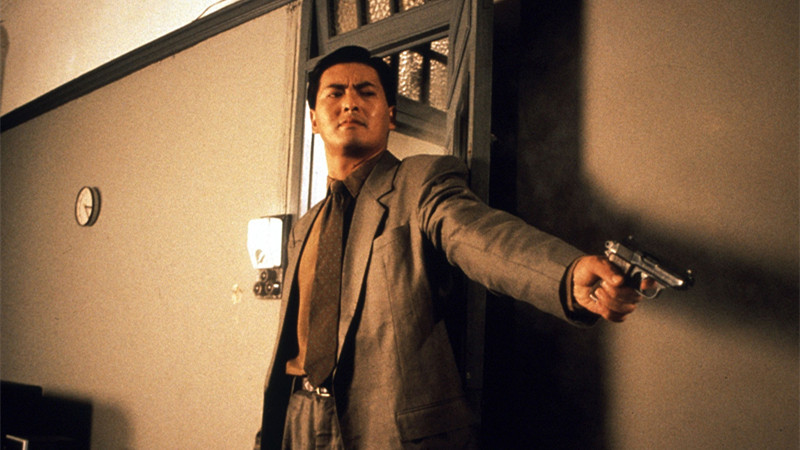
When one considers Asian cult cinema, inevitably their mind will linger toward the Japanese, with the Pinku-exploitation films and directors like Wakamatsu, Miike, Sono etc.
However, with a more thorough look, one would realize that Hong Kong has its own share of cult productions, with a plethora of Shaw Brothers and Golden Harvest productions considered cult at the moment, although their status was quite different at the time of their initial screening. Furthermore, CAT III, as it is filled with horror, splatter, and exploitation elements definitely falls under the same category.
Here are 25 of the most iconic cult Hong Kong films, by date.
25. One Armed Swordsman (Chang Cheh, 1967)
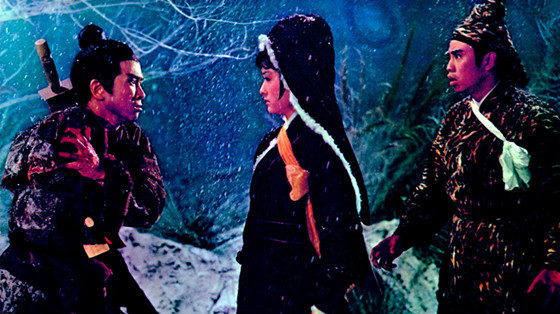
Shaw Brothers is probably the studio with the most entries in the martial arts genre, and this particular movie was produced during their most dominant period in the 60s, when they controlled 35 companies, 130 cinemas, nine entertainment parks and three studios.
Furthermore, “One-Armed Swordsman” introduced the concept of the anti-hero, which additionally entailed intense swordplay, heavy bloodletting, and a level of violence that was unprecedented for its time.
Finally, the film was the first to reach the mark of HK $1 million at the local box office, singlehandedly making a star out of his protagonist, Jimmy Wang.
A rival clan attacks the Golden Sword School, and the one who manages to save the master is a servant who ends up mortally wounded. In order to honor his sacrifice, Master Qi Ru Feng takes his son, Fang Gang, as a student, in a very unusual gesture for the era.
Years pass and Fang Kang has become one of the top students in the school; however, he is the object of scorn by his classmates due to his low origins, thus resulting in him abandoning the institution.
Eventually, he confronts a gang headed by Master Qi’s daughter, Pei-Er, who in the following battle cunningly manages to cut off his arm. Later in the story, the injured Fang Kang is nursed by a farm girl, Hsia Man, who subsequently provides him with a kung fu manual with techniques for one-handed fighters.
Wang was evidently not of the same caliber as master fighters Bruce Lee or Jackie Chan. Because of this, Cheng Chang’s biggest achievement in this film is that he managed to make him seem like a great martial artist, through a number of clever cinematic tricks and stunts.
Besides the impressive hacking and slashing action, the director also showed a number of social issues, including loyalty, forgiveness, and even a bit of romance.
24. Way of the Dragon (Bruce Lee, 1972)
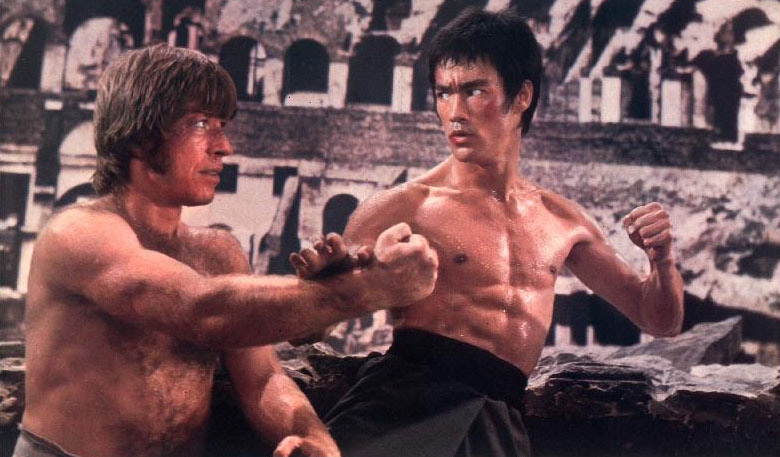
Tang Lung arrives in Rome from Hong Kong to help a friend who is having trouble with the local mafia, who wants to acquire her restaurant. Upon his arrival, the gangsters back off after Tang exhibits his martial arts prowess. However, their withdrawal is temporary and their boss orders them to kill Tang. As their efforts fail, he hires an international martial champion named Colt.
This film is Bruce Lee’s first and last attempt at writing and directing, and he did a great job with both, in genuine martial arts film style where the script and the direction exist solely to provide a background for the action. Furthermore, he included some humorous moments, particularly in the first part of the film.
The scene that made the film an international success, and currently a cult production, is the one where Lee duels with Chuck Norris, who plays Colt, in the Coliseum, in one of the greatest fighting sequences of both protagonists’ career.
23. Intimate Confessions of a Chinese Courtesan (Chor Yuen, 1972)
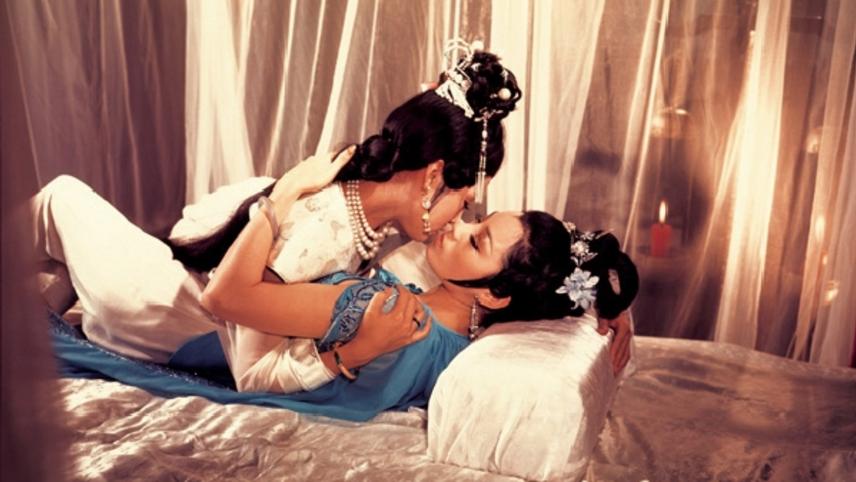
In the vast filmography of both Shaw Brothers and Chor Yuen, “Confessions of a Chinese Courtesan” manages to stand out due to its disregard for the taboos of the era and its permeating eroticism, which occasionally reaches the borders of sleaziness.
The beautiful Ainu is abducted and sold to the infamous Four Seasons Brothel, who is run by the notorious Lady Chun. Ainu resists in the beginning, in a series of actions that lead her into being locked into a dungeon. Eventually, one of the people in the brothel tries to free her, but meets the rage of Lady Chun, who brutally kills him.
Ainu is tortured, but Lady Chun, who happens to be a lesbian, takes a liking to her, and tries to show her that life could be much more comfortable if she succumbed to her. Her feelings, however, do not obstruct her from pimping her out to a number of members of the aristocracy, who bid for her virginity, although they all take their turn with her, each indulging in his own unique fetish.
Eventually, Ainu succumbs to Lady Chun, becomes her mistress and even learns kung fu from her, including the secret technique named “Ghost Hands”. As she appears to enjoy her life in the brothel, a number of murders start occurring in the area, and the local police chief, the newly arrived Chi Te, suspects Ainu, as a deadly game of cat-and-mouse initiates, where love also seems to play a significant role.
Nudity, sex among lesbians and continuous raping is not one usually expects to watch in a Shaw Brothers film, but “Confessions of a Chinese Courtesan” does include them all, although not in very graphic fashion. However, the presence soft-core elements do not mean that the action is scarce or artless; on the contrary, the martial arts element is quite strong, through a number of impressive and very brutal fighting scenes, with the ending one being the most impressive, as it highlights Simon Chui’s work in the choreographies.
Add to that the aspect of unrequited love, which is presented in two different cases, a social comment regarding the corruption of the rich and the inability of the law, and the presence of two femme fatales, and you have the backbone of a truly cult film.
22. Black Magic (Ho Meng Hua, 1975)
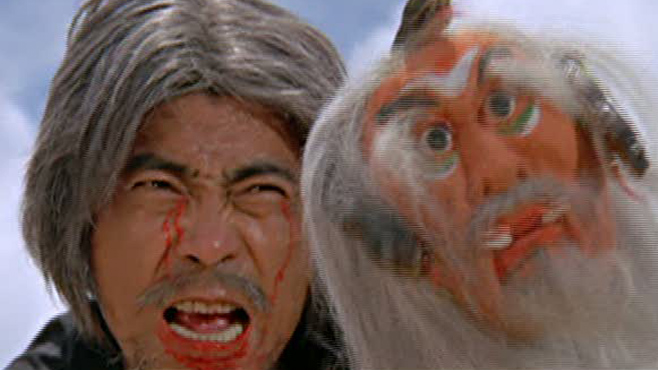
The script starts with black magician Shan Chien Mi performing a ritual for a woman who wants her adulterer husband and his mistress dead. The spell succeeds but after awhile, the magician has to abandon the village where he lived, when a good magician destroys his house.
The story then changes its setting and we are introduced to the sultry Mrs. Zhou, the widow of a construction magnate, who is set on seducing one of her employees, Xu Nuo. He, however, is engaged, and being faithful and honest, resists her aggressive flirting. Mrs. Zhou also has a suitor, Liang Chia Chieh, a fortune hunter playboy who just wants her for her money. When the two of them have a fight, Liang learns from a friend that a black magician living in the forest can help him.
Liang eventually finds him, but soon discovers that he has received much more than he has bargained for, since the magician is Shan Chien Mi. Furthermore, when Mrs. Zhou learns of his powers, she also asks for his help in order to seduce Xu Nuo. With the help of black magic, she succeeds, but Xu Nuo’s bride, Wang Chu Ying, hires a white magician to help her against the combined powers of Mrs. Zhou and Shan Chien Mi.
Ho Meng Hua sets the tone from the first frame, which begins with philosopher Zhou Nan’s quote: “Excessive sex could have a similar result as being under spell.” The scene continues with Shan Chien Mi lactating a woman, since apparently this milk is essential for black magic, before he cuts some human meat and boils it along a human head. This scene is emblematic of the film’s style, as sleaziness, gore, nudity, violence, voodoo and sex seem to be everywhere.
21. Five Deadly Venoms (Chang Cheh, 1978)
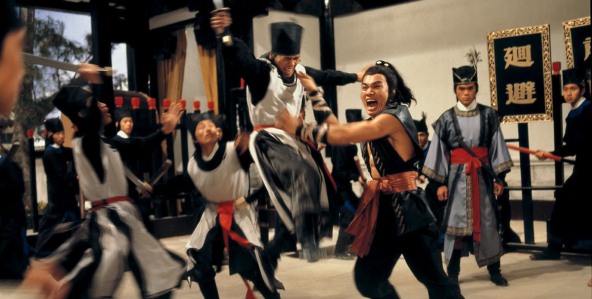
The film that initiated the career of the five actors that would eventually become known as the “Venom Mob” is considered one of the most cult productions of both Chang Cheh and Shaw Brothers.
The dying master of the Poison clan sends Yang Tieh, his last disciple, on a mission to search five former students of his, each a master of one of the five styles: the Centipede, the Snake, the Lizard, the Toad and the Scorpion, who is the only one whose identity is not known by the others. The master is afraid that some of them are using his teachings in order to steal the fortune of another former colleague, Yun. Yang Tieh has to determine who can help him and who is against him.
The initial scene, where the five students are training in a lair wearing masks, is one of the most iconic of all time in martial arts films. Apart from that, the focus on the film lies mainly with the story and the intrigues and conspiracies that take place, although the abilities of the “Venom Mob” also find space to shine.
20. Game of Death (Robert Clouse, Bruce Lee, 1978)
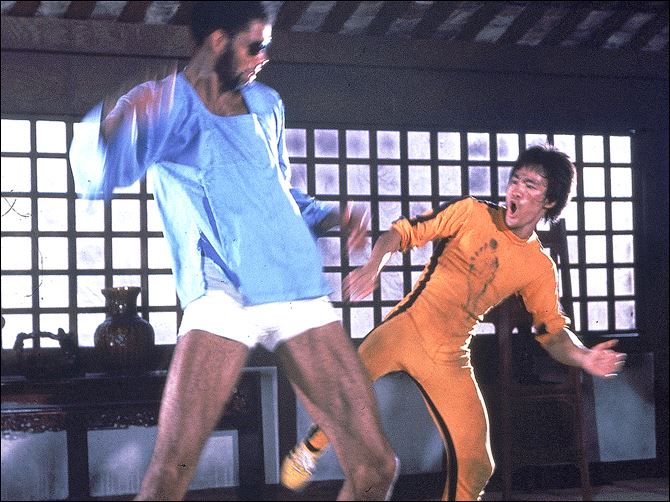
Hai Tien is a retired champion of martial arts who is approached by the Korean mafia to lead a team into a pagoda, where something very valuable is hidden on the top floor. Guns are not allowed in the pagoda, and each level is guarded by a supreme martial artist.
The film is considered cult for a number of reasons. During filming, Bruce Lee received an offer to star in “Enter the Dragon”, and he temporarily abandoned “Game of Death” to do just that. Lee died before completing the film, although more than 100 minutes of footage was shot prior to his death. The remaining footage has been released with Lee’s original Cantonese and English dialogue, with John Little dubbing Lee’s Hai Tien character as part of the documentary entitled “Bruce Lee: A Warrior’s Journey”. Most of the footage that was shot is from what was to be the centerpiece of the film.
After Lee’s death, “Enter the Dragon” director Robert Clouse was enlisted to finish the film using two stand-ins, which was released by Golden Harvest in 1978, five years after his death. Lastly, the final boss of the film is none other than Kareem Abdul-Jabbar.
19. Hex (Kuei Chih-Hung, 1980)
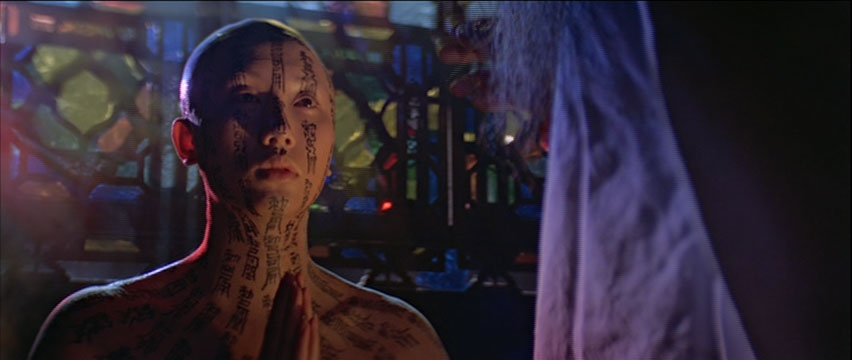
In the 80s, Shaw Brothers realized that they could not operate just by releasing scores of kung fu films, and decided to turn towards the horror genre. One of their most successful productions was “Hex”, which even spawned a couple of sequels.
Chan Sau-ying is a woman facing terrible issues. She suffers from consumption and Chun-yu, her husband, is a despicable man who gambles, drinks and even beats his wife, at least when he is not torturing the servants, who eventually leave the house. Lady Chan is desperate for something that will change her life, and her wish comes true when a young girl named Yi-wah asks to work in the house.
After a series of violent episodes with her husband, the two of them manage to drown him into a large jar and drop his body into a pond. However, Madam Chan feels guilty, a sentiment that becomes even worse when the police start to investigate the murder, only to discover that there is no dead body in the pond. The story then becomes an amalgam of plot twists and supernatural phenomena.
Kuei Chih-Hung directed and penned (with Tan Chin-hua) a film that starts as an Asian variation of the French film “Les Diaboliques”, but eventually becomes a horror film in the distinct Hong Kong style, with exorcism, nudity, a plethora of ghosts attacking the living, and even forced tattoos. Add to that some gore, mainly addressed toward animals, some humor and you have the general frame of the film. The horror element is quite well presented, with many truly agonizing scenes, a sentiment that becomes even more heightened by Eddie Wang’s fitting music.
The exploitation element is not as intense as in CAT III films. However, it is definitely present and chiefly depicted through the almost constant violence toward women, who never seem to stop suffering. The nudity presented in the last part also moves in the same direction.
18. The Prodigal Son (Sammo Hung, 1981)
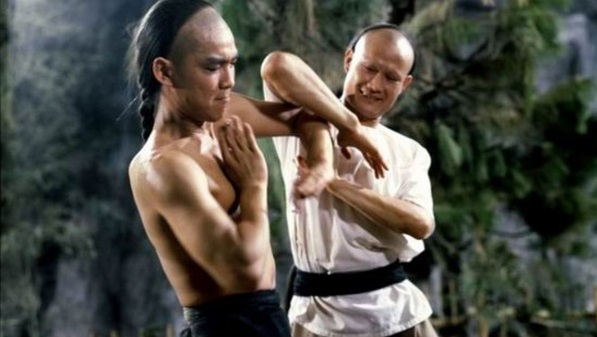
Considered one of the best traditional kung fu movies ever made, “The Prodigal Son” tells the story of historical Chinese Wing Chun practitioners, Leung Chang and Leung Yee Tai. The former is the privileged son of a wealthy entrepreneur in 19th century Foshan who studies kung fu, albeit unenthusiastically.
His lack of drive and his constant challenging of other fighters to duels have forced his father to pay those people to deliberately lose against him. Eventually, during a performance attended by Chang’s friends, a skirmish between them and a member of the troupe occur. The troupe member unveils himself as the renowned Wing Chun master Leung Yee Tai, before humiliating them in the ensuing fight.
Subsequently, Chang challenges him to a duel, but his father does not succeed in bribing him, thus resulting in his easy loss and the truth of what was really going on. The disillusioned Chang asks Tai to teach him Wing Chun.
Sammo Hung’s prowess in portraying Wing Chun found its apogee in this film, with quick and elaborately choreographed fight scenes that the actors execute to perfection without the use of wireworks or camera tricks.
Thus, the three protagonists (Yuen Biao, Lam Ching Ying and Sammo Hung) earned the Best Action Choreography award at the 1983 Hong Kong Film Awards.
Apart from the fight scenes, the rest of the film is a farcical comedy in the style established by Jackie Chan and Golden Harvest, which includes preposterous characters, lots of clowning (particularly by Hung) and slapstick humor.
Furthermore, Hung entailed scenes of the Chinese opera (the choreographies of the time were based on its rhythm) and an extra-violent scene where a mass murder occurs.